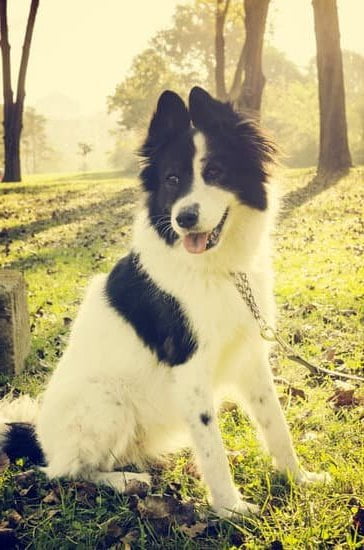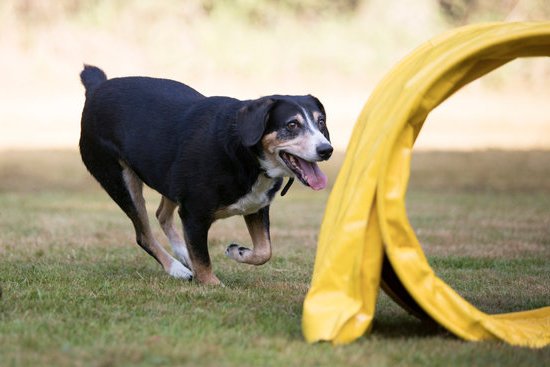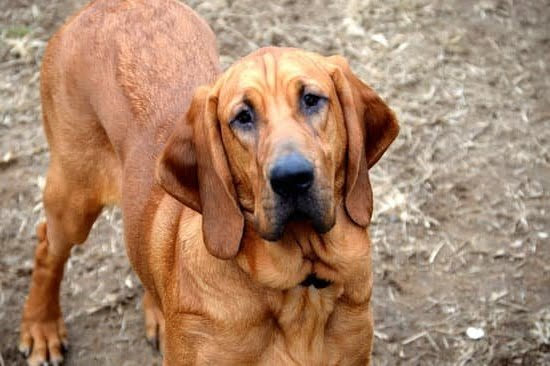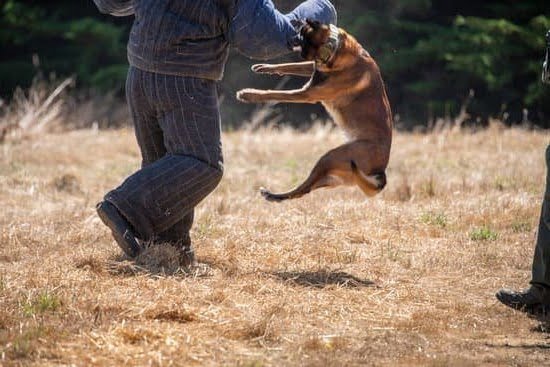Training a grown-up dog may seem like a daunting task, but with the right approach and techniques, it is definitely achievable. In this article, we will explore how to train a grown-up dog effectively, ensuring a harmonious relationship between the dog and its owner. Training not only helps in correcting undesirable behaviors but also strengthens the bond between the pet and the owner.
As dogs mature, their behaviors and needs evolve, making training essential for maintaining a well-behaved companion. Proper training provides mental stimulation for the dog and helps prevent behavioral issues that may arise as they age. For owners, well-trained dogs are easier to manage and can be trusted in various situations, enhancing the overall quality of life for both parties.
Assessing the current training level of your grown-up dog is crucial in tailoring an effective training plan. Understanding their existing behaviors, commands they already know, and any potential obedience issues allows for targeted training strategies.
By establishing clear communication through consistent commands, tone of voice, and body language, owners can effectively convey their expectations to their furry friends. This sets the foundation for successful training sessions in which goals are clearly defined based on the dog’s age, breed, and temperament.
Assessing the Current Training Level of the Dog
Evaluating Existing Behaviors
Before starting a training regimen for a grown-up dog, it is essential to assess their current behavior patterns. Take note of any behaviors that may be problematic or undesirable, such as excessive barking, aggression towards other animals or people, or destructive tendencies like chewing furniture. Understanding these behaviors will help in creating a targeted training plan to address them effectively.
Reviewing Known Commands
It is also important to evaluate the commands that the dog already knows. Grown-up dogs may have received some level of training in the past, so identifying the commands they are familiar with can serve as a foundation for further training. Assess how consistently they respond to these commands and whether there are gaps in their obedience skills that need to be filled.
Identifying Obedience Issues
During the assessment phase, it is crucial to identify any potential obedience issues that need to be addressed. This may include problems with leash walking, recall, sitting on command, or respecting boundaries in the home. By pinpointing these issues early on, you can tailor your training approach to focus on correcting specific behaviors and reinforcing positive ones effectively.
Establishing Clear Communication
To establish clear communication with your grown-up dog, it is essential to use consistent commands for each desired behavior. Whether you are teaching basic commands like sit, stay, or come, or working on more complex behaviors, using the same verbal cues consistently will help your dog recognize what you want them to do. Pairing these commands with corresponding hand signals can further reinforce understanding and enhance communication between you and your canine friend.
In addition to consistent commands, paying attention to your tone of voice is crucial when training a grown-up dog. Dogs are highly attuned to human emotions and can pick up on subtle changes in tone. Using a firm but positive tone when giving commands can convey authority without instilling fear in your dog.
Conversely, yelling or showing frustration through an angry tone can confuse or intimidate your pet. Remember that maintaining a calm and assertive demeanor will foster trust and cooperation during training sessions. By establishing clear communication through consistent commands, tone of voice, and body language, you can effectively convey your expectations to your grown-up dog and build a strong foundation for successful training experiences.
Setting Realistic Goals
When determining training objectives for a grown-up dog, it is important to consider their age. Older dogs may have physical limitations or slower learning abilities compared to younger dogs. Therefore, setting realistic goals that take into account the dog’s age can help manage expectations and tailor the training approach accordingly. For example, an older dog may require more patience and gentleness during training sessions.
Breed characteristics also play a crucial role in establishing achievable training objectives for a grown-up dog. Different breeds have varying levels of energy, intelligence, and predispositions to certain behaviors. Understanding these breed-specific traits can guide the training process and help set realistic goals that align with the dog’s natural tendencies. By incorporating breed-related considerations into training objectives, owners can effectively address behavior issues and encourage desired habits in their grown-up dogs.
| Dog’s Age | Training Considerations |
|---|---|
| Older Dogs | Require more patience and tailored approach |
| Younger Dogs | May have higher energy levels and faster learning abilities |
| All Ages | Consistency, positive reinforcement, and clear communication are key |
Positive Reinforcement Techniques
Positive reinforcement is a highly effective method when it comes to training grown-up dogs. By utilizing treats, praise, and rewards, you can reinforce desired behaviors in your furry companion. Here are some techniques that can help you effectively train your grown-up dog using positive reinforcement:
- Use high-value treats: Find out what treats your dog loves the most, whether it’s small bits of cooked chicken, cheese, or commercial dog treats. Use these high-value treats during training sessions to motivate your dog.
- Timing is key: Make sure to give the treat immediately after your dog exhibits the desired behavior. This helps your dog make the connection between the action and the reward.
- Consistent praise: Along with treats, verbal praise and petting are essential tools for positive reinforcement. A simple “good boy” or “good girl” accompanied by gentle pets can go a long way in reinforcing good behavior.
In addition to treats and praise, rewards such as extra playtime or a favorite toy can also be used to reinforce positive behaviors in grown-up dogs. This variety in rewards keeps training sessions engaging and fun for both you and your dog. Remember that each dog is unique, so it’s important to find what motivates your furry friend the most.
When using positive reinforcement techniques, consistency is key. Make sure to always reward good behavior and ignore or redirect undesired behavior. With patience, regular training sessions, and plenty of positivity, you can effectively train a grown-up dog using these methods. Remember that every interaction with your dog is an opportunity for training and bonding, so make the most of it.
Correcting Undesired Behaviors
Addressing Jumping
One common behavioral issue that owners may encounter with grown-up dogs is jumping. Whether it’s when guests arrive, during playtime, or when they’re seeking attention, jumping can be a frustrating behavior to deal with. To address this issue, it’s essential to remain consistent in your response.
When your dog jumps, calmly turn away and avoid any eye contact or interaction until they have all four paws on the ground. Once they are calm, reward them with praise or a treat for their good behavior.
Tackling Excessive Barking
Another challenging behavior seen in grown-up dogs is excessive barking. To effectively tackle this issue, it’s crucial to understand the root cause of the barking. Is your dog bored, anxious, alerting you to something, or seeking attention? Once you determine the reason behind the barking, you can work on addressing it. Teaching a “quiet” command and using positive reinforcement when your dog stops barking can be helpful in modifying this behavior.
Curbing Digging Behavior
Digging is a natural behavior for dogs but can become problematic when done excessively. If your grown-up dog is digging up your yard or garden areas, there are steps you can take to curb this behavior. Providing alternative outlets for digging such as a designated digging area filled with sand or soil can redirect their focus. Additionally, ensuring your dog gets enough mental and physical exercise can help reduce their urge to dig out of boredom or excess energy.
By understanding these common behavioral issues and implementing appropriate training techniques tailored to each specific problem area, owners can effectively address undesired behaviors in their grown-up dogs and promote harmonious relationships based on trust and respect. Regular training sessions coupled with patience and consistency will go a long way in helping adult dogs overcome these challenges and thrive in their environment.
Consistency in Training
Training a grown-up dog can be a rewarding experience that strengthens the bond between you and your furry companion. One essential aspect of training is consistency. Regular training sessions are crucial in helping your dog retain commands and behaviors.
By setting aside time each day for training, you can reinforce good habits and prevent regression in their behavior. Patience plays a key role in this process, as every dog learns at their own pace. Remember to remain calm and encouraging during training sessions, even if progress seems slow.
Repetition is another vital component when it comes to training a grown-up dog. Dogs thrive on routine, so repeating commands and exercises helps solidify their understanding of what is expected of them. Consistent repetition reinforces the desired behaviors and makes it easier for your dog to remember commands over time. While it may seem monotonous at times, repeating training exercises regularly is essential for long-term success.
When incorporating regular training sessions, patience, and repetition into your routine with a grown-up dog, it’s important to celebrate small victories along the way. Acknowledge and reward your dog’s progress to keep them motivated and engaged during training.
Positive reinforcement goes a long way in encouraging good behavior and strengthening the bond between you and your furry friend. By staying consistent with your training efforts, you can instill positive habits that will benefit both you and your grown-up dog for years to come.
| Aspect of Training | Importance |
|---|---|
| Consistency | Regular sessions reinforce good habits |
| Patience | Dogs learn at their own pace, require patience |
| Repetition. | Reinforces desired behaviors maintains routine |
Seeking Professional Help
Training a grown-up dog can come with its own set of challenges, especially if the dog has not received proper training in the past. However, it is never too late to start training and help your furry companion become a well-behaved member of your family.
Assessing the current training level of the dog is crucial in understanding where they stand and what areas need improvement. By establishing clear communication through consistent commands, tone of voice, and body language, you can effectively convey your expectations to your dog.
Setting realistic goals is essential when training a grown-up dog. Each dog is unique in their age, breed, and temperament, so it’s important to tailor your training objectives accordingly. Positive reinforcement techniques such as using treats, praise, and rewards can be highly effective in encouraging desired behaviors in grown-up dogs. Additionally, correcting undesired behaviors like jumping or barking requires consistency and patience from the owner.
While many pet owners can successfully train their dogs on their own, there may be instances where seeking professional help is necessary. Professional dog trainers have the expertise and experience to address specific training challenges that may arise with a grown-up dog.
Whether it’s dealing with aggression or severe behavioral issues, a professional trainer can provide valuable guidance and support. Remember that every dog is capable of learning new behaviors regardless of their age, and with dedication and proper guidance on how to train a grown up dog, you can foster a strong bond built on mutual respect and trust.
Frequently Asked Questions
Can a Full Grown Dog Be Trained?
Yes, a full-grown dog can definitely be trained. While it may take more time and patience compared to training a puppy, dogs of any age can learn new behaviors and commands through consistent training techniques.
What Age Is Too Late to Train a Dog?
There is no specific age that is too late to train a dog. Dogs are capable of learning throughout their entire lives, so it’s never too late to start training them. Older dogs may require more time and effort to unlearn bad habits, but they can still be successfully trained.
Is It More Difficult to Train an Older Dog?
It may be slightly more challenging to train an older dog compared to a young puppy due to potential ingrained behaviors or lack of previous training. However, with the right approach, older dogs can still learn and respond well to positive reinforcement techniques. Patience and consistency are key when training an older dog.

Welcome to the blog! I am a professional dog trainer and have been working with dogs for many years. In this blog, I will be discussing various topics related to dog training, including tips, tricks, and advice. I hope you find this information helpful and informative. Thanks for reading!





